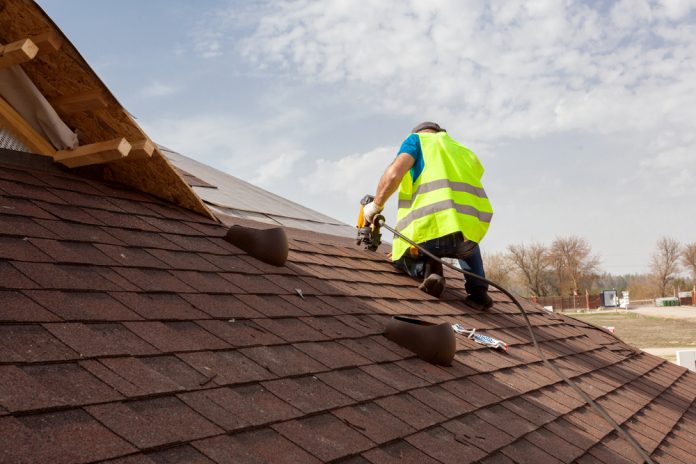Waterproof paint — substances like Cromapol, Acrypol, and Evercryl — are must-haves for DIYers. With their ease of application, versatility, and excess of ‘y’s, they have many uses — some obvious, some surprising. Their fibrous flexibility prevents them from cracking even as their substrate undergoes thermal expansion and contraction.
Essentially, these substances sit in the realm of being waterproof enough to withstand heavy rain but not durable enough to be used by themselves for all roofing purposes. They are effective, but not invincible. However, merely effective is often sufficient for surfaces only exposed to water intermittently or to reinforce durable materials against water.
Emergency Roof Repair
Even a small amount of water entering a roof causes catastrophic damage very quickly. Smacking a coat of waterproof paint like Cromapol on an affected area once you located the leak lets you keep a lid on things while you put together a permanent solution. Waterproof paints do not require a primer or more than one coat. In addition, their applications work even in damp conditions. Just smack some on ASAP and you are good to go while you look for a longer-lasting fix.
Waterproofing Vehicles
Waterproof paint is superb for bolstering a vehicle’s standard waterproofing. Vehicles fall into the category of frequent exposure to heavy rain but not for very extended periods. Waterproofing with waterproof paint suits camper vans, especially if camper vans sustain damages to the roofs. However, it is best to only use it on white, black, or grey vehicles since waterproof paints are difficult to paint over, and most only come in those colors.
Bolstering an Existing Flat Roof
Even if a roof has not suffered any specific damage, after a couple decades of wear and tear, eventually the materials start to wear out. However, slapping a coat of waterproof paint really helps out in that sort of situation. The extra protection gives an extra lease of life to a roof that starts to go. It adds an extra few years to the roof before it needs a complete replacement. However, certain waterproof paints will not work with fibreglass.
Waterproofing Temporary Installations
Normally, something like roofing felt would be used to waterproof a temporary cabin or shed. However, to make sure nothing is getting through, a coat of Cromapol serves as reinforcement. It also helps to patch a hole in the felt. Even something as minor as a portable toilet benefits from a lick of waterproof paint.
Waterproofing Concrete Guttering
In the immediate post-WWII period, there was a huge shortage of materials. As a result, many houses ended up with guttering made out of concrete. These finlock gutters, however, are quite temperamental. As we learned from brutalist architecture, bare concrete does not suffer water particularly well. Thus, making a part of the house specifically designed to carry water out of concrete is only one-step above a teapot made out of chocolate. Fortunately, a coat of waterproof paint significantly reduces the hassle caused by finlocks.
Caveats
One thing that waterproof paint absolutely should not be used for, however, is sealing fishing tanks or fishponds. This is because it is usually highly toxic to fish. It also stinks to high heaven and is flammable, so it does not perform well when used internally or where it is in contact with many people.
Find a Home-Based Business to Start-Up >>> Hundreds of Business Listings.















































